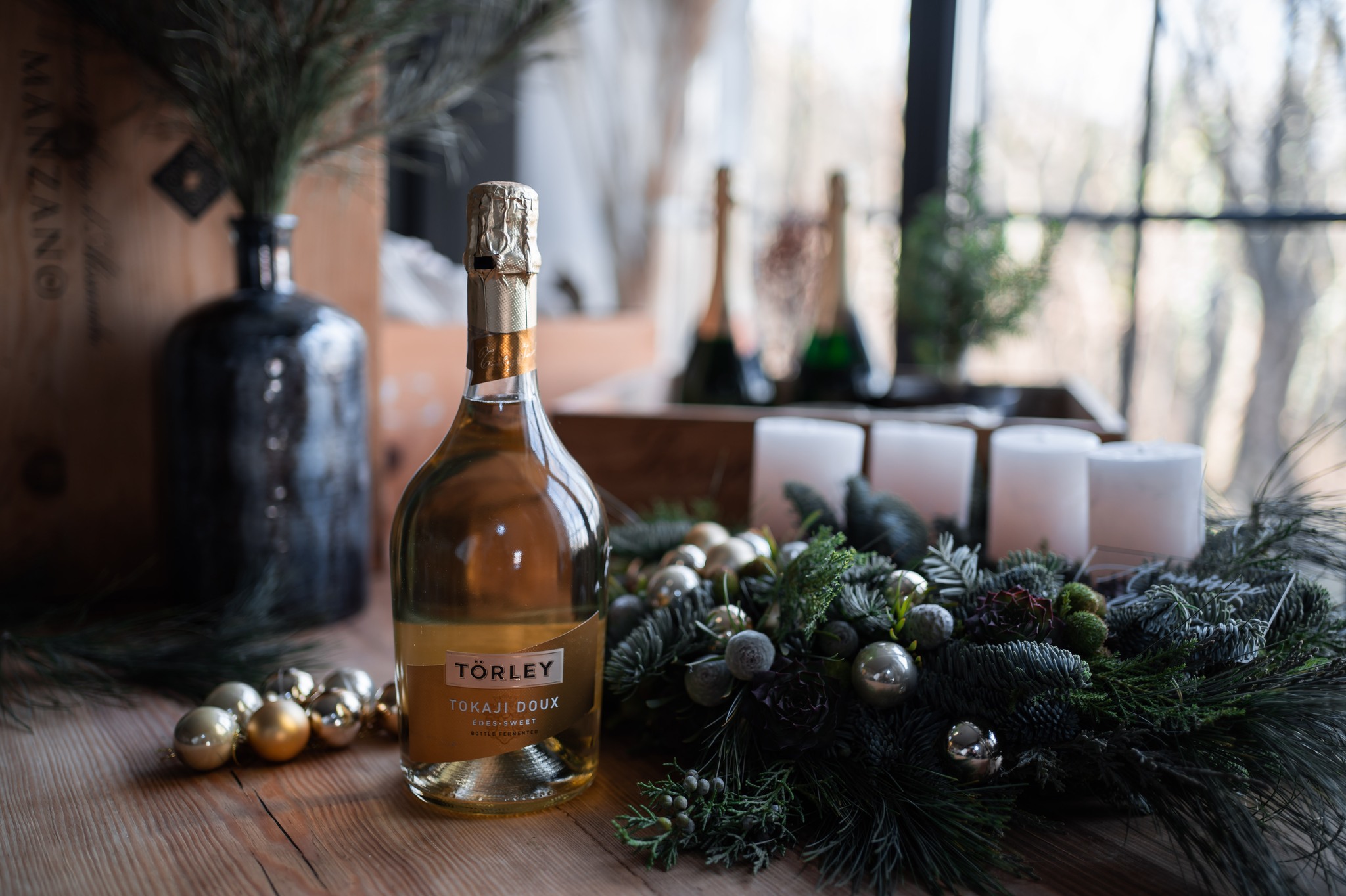
Hungaria's Rosé Extra Dry won gold in its category for the third time, this time also making it into the Top 10 selection.Continue reading

Similar to Hungarian wines, domestic champagne producers have also been catching up in terms of quality after the decades of socialism. This has gone so far that the champagne culture in Hungary is already experiencing its renaissance today. Although champagne production has a long-standing tradition in Hungary, non-traditional champagnes have recently been added to the offer of wine cellars. Today, more and more winemakers also produce sparkling wines, but there are also many places that even offer raw sparkling wines, which is a real gourmet delight. And as for awards: in 2021, the most prizes in international competitions were won by the sparkling wines of Törley, Sauska, and Kreinbacher.
This article was originally published on our sister-site, Ungarn Heute.
Hungary has a long-standing tradition of producing champagne. The first cellar was opened in 1825 by Hubert J. E. in Pozsony (Bratislava). The Hubert Champagne even won the prize for the best Hungarian champagne at the first Hungarian industry exhibition in 1842. In the second half of the 19th century, the municipality of Budafok, south of Budapest, developed into the new center of champagne production. The first champagne cellar there was founded by József Törley, who had studied champagne production in the French city of Reims. His production reached two million bottles by the end of the First World War. At the end of the 19th century, Törley chose the hills of Etyek as vineyards from which to produce the base wine for his then world-famous champagne. Yes, it was world-famous; Törley had champagne warehouses in Hamburg, Berlin, Copenhagen, and even Paris. Besides Törley, François (Budafok), Eszterházy (Tata), and Dittke (Pécs) were the best champagne producers in Hungary.
The international reputation of the Hungarian champagne was unfortunately washed away by history; due to the nationalization of the big factories after the Second World War, the main aim was quantity rather than quality, as the Soviet import demands had to be met. A qualitative change in domestic sparkling wine production occurred only in the mid-1990s when the wave of privatization also reached the producers of alcoholic beverages. Family wineries came later, practically 5-7 years ago.
As we have already pointed out, a number of domestic wineries have started producing champagne in recent years, and have said goodbye to the idea that only one or two big companies can produce champagne in Hungary. In this article, we offer you 5 + 1 Hungarian champagnes with which to toast the New Year. The list contains champagnes of larger as well as smaller wineries. (Prices may vary depending on the vendor)!
Sauska Tokaj Extra Brut Rosé
To the blend of Tokaj Furmint and Chardonnay, 5% Pinot Noir was added to obtain a salmon-colored sparkling wine, produced according to the traditional method, and rested in the bottle for more than 20 months. Price: from HUF 5,100 (14 euros).
Törley Chardonnay Sparkling Wine
Thousands of tiny bubbles bubble in this airy, well-acidified raw sparkling wine, where aromas of citrus and green peach predominate. Price: from HUF 3,800 (10 euros).
Kreinbacher Prestige Brut
One of Nagy-Somló’s outstanding wines, with 71% Chardonnay and 29% Furmint, aged for at least 24 months. The finish is nutty-brioche-vanilla with white-fleshed fruit. Price: from HUF 5,900 (16 euros).
Kreinbacher Brut Classic 2016 Magnum
This is the sparkling wine that won gold at the most prestigious Champagne and Sparkling Wine World Championship of the World (CSWWC). Price: from HUF 16,000 (43 euros).
Pálffy Méthode Traditionelle Pinot Noir Brut
This traditional sparkling wine from the family winery in Köveskál is a complex and long-lasting sparkling wine for those who want something more thoughtful. Price: from HUF 6,900 (18.70 Euro).
Nádas Wine Cellar Blanc de Blancs
A 100% Chardonnay sparkling wine from the Etyek Winery, aged for 40 months, with real aromas of fresh white fruits, fun and easy to drink. Price: from HUF 6,200 (16.80 euros).
Although the wide range of Hungarian champagnes has not been on the market for very long, they repeatedly win awards even in foreign competitions. At the VinAgora international champagne competition in the summer of 2021, the “Chardonnay Brut” champagne from Törley received the greatest recognition, the Champion Award. In addition, the champagne “Irsai Olivér Doux” won a gold medal.
At the Champagne & Sparkling Wine World Championships 2021, champagnes from 19 countries have won gold or silver medals, while the two traditionally strong countries, Italy and France, performed best. It was good news that a Hungarian champagne (Winery Sauska) was also awarded a gold medal this year. Furthermore, Hungary received five more silver medals, while the winery Kreinbacher from Somló received four of them:
• Gold – Sauska NV Brut
• Silver – Sauska NV Rose Brut
• Silver – Kreinbacher NV Brut Classic
• Silver – Kreinbacher 2017 Extra Dry Magnum
• Silver – Kreinbacher 2016 Prestige Brut Magnum
• Silver – Kreinbacher 2016 Rosé Brut Magnum
The Karásztelek Champagne Cellar from Transylvania also did well, its Carassia champagne won four medals (three gold and one silver).
Source: vince.hu, boraszportal.hu, magyarkonyhaonline.hu, agrarszektor.hu
Featured image: Törley Pezsgő’s Facebook page